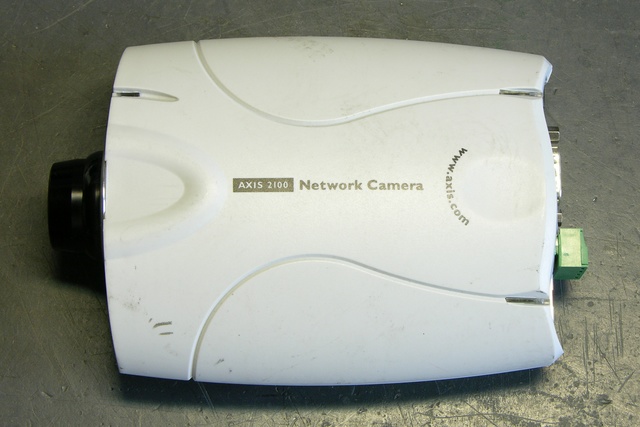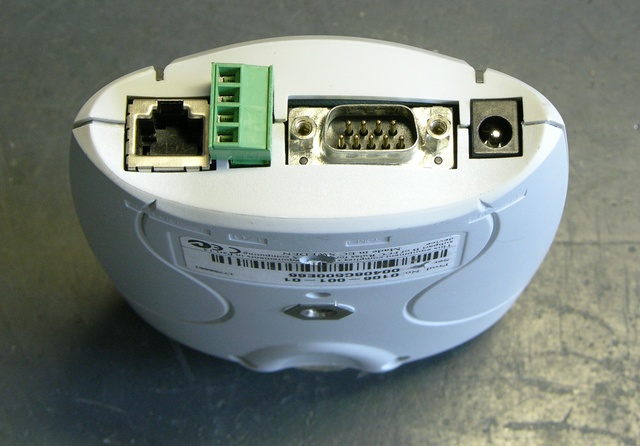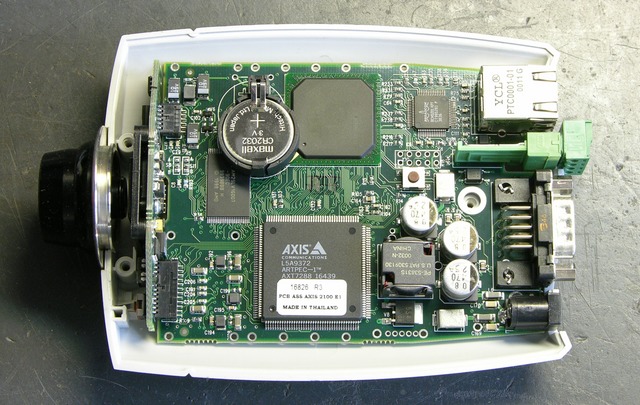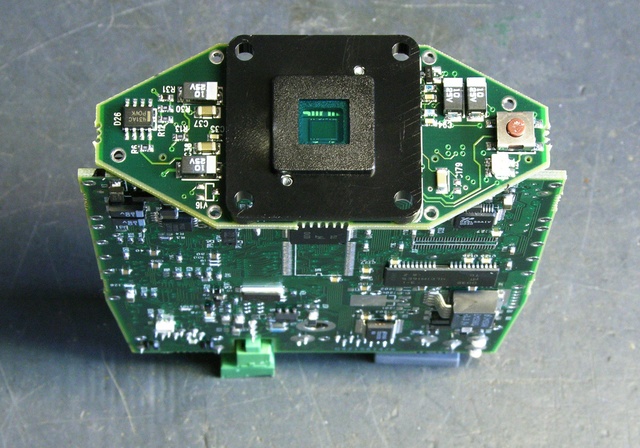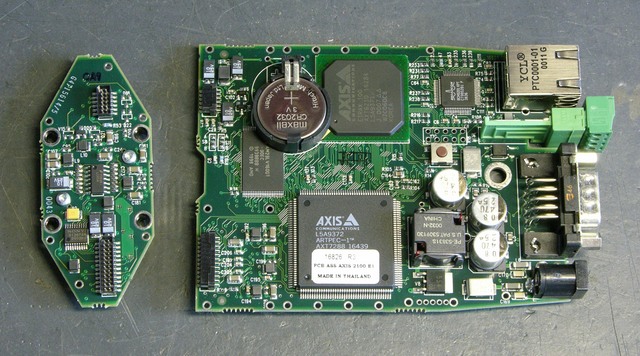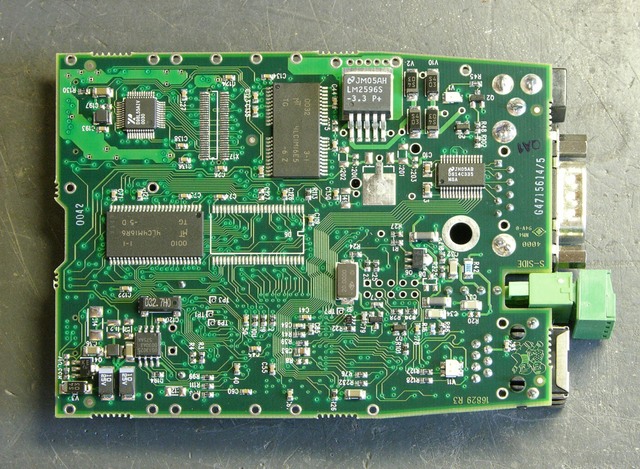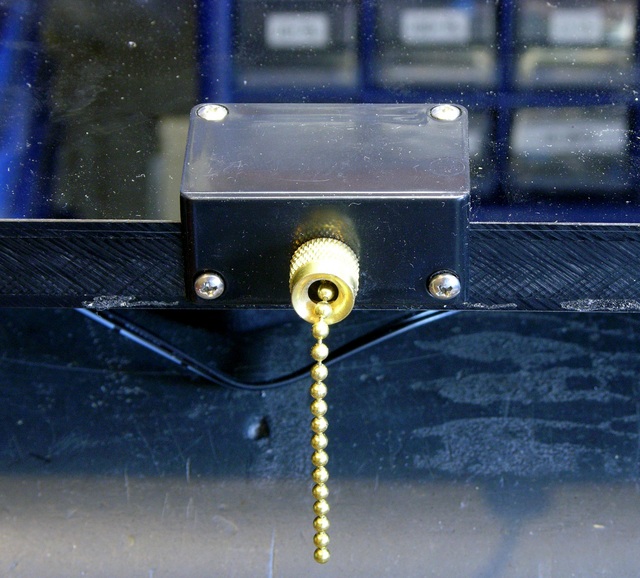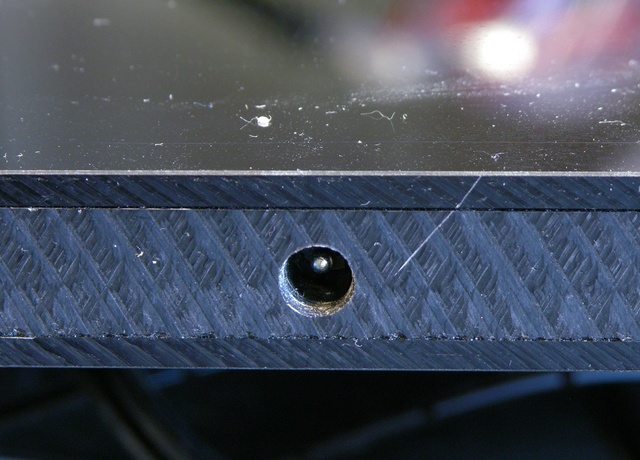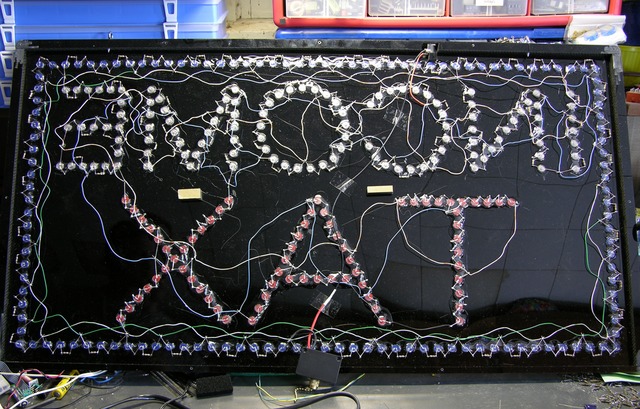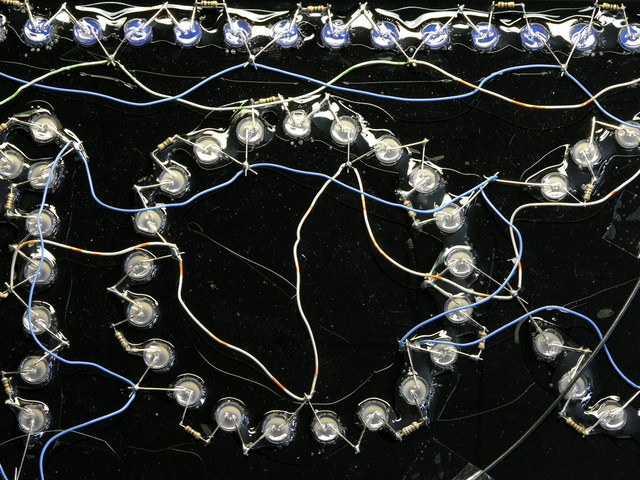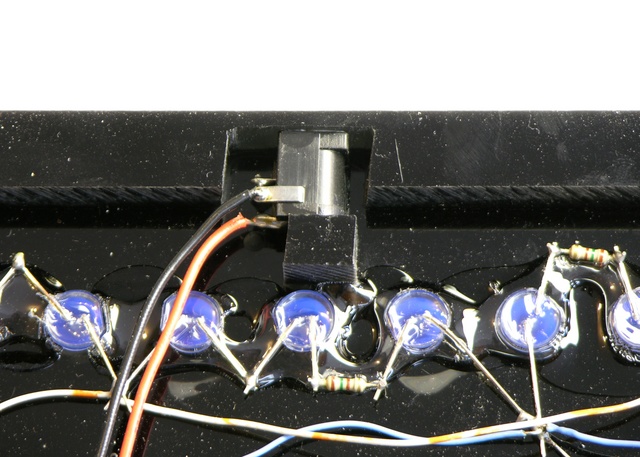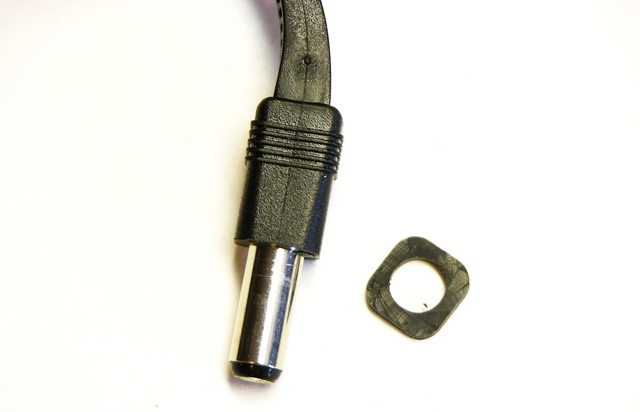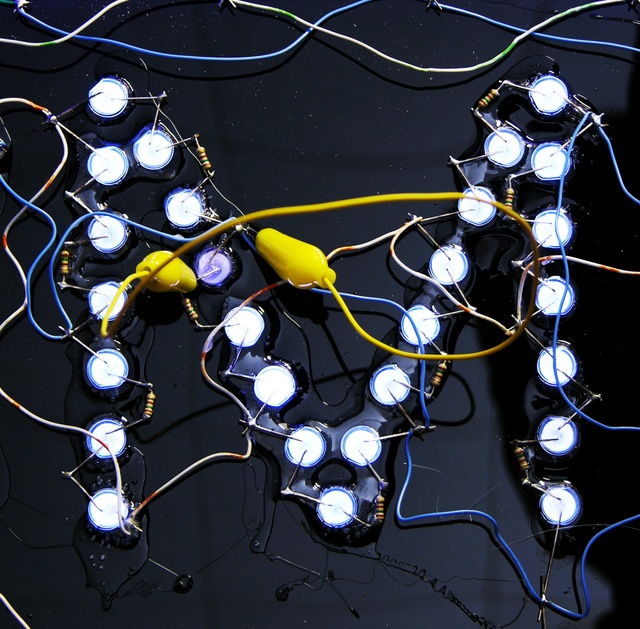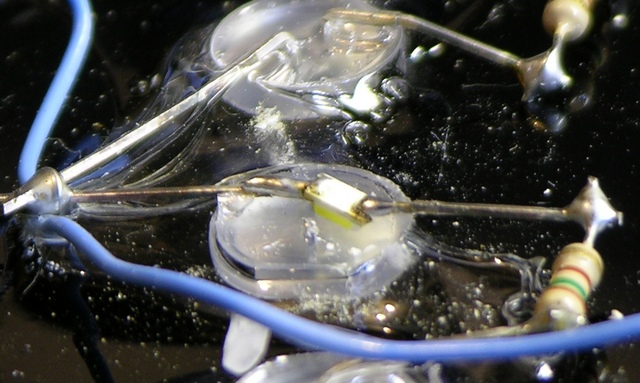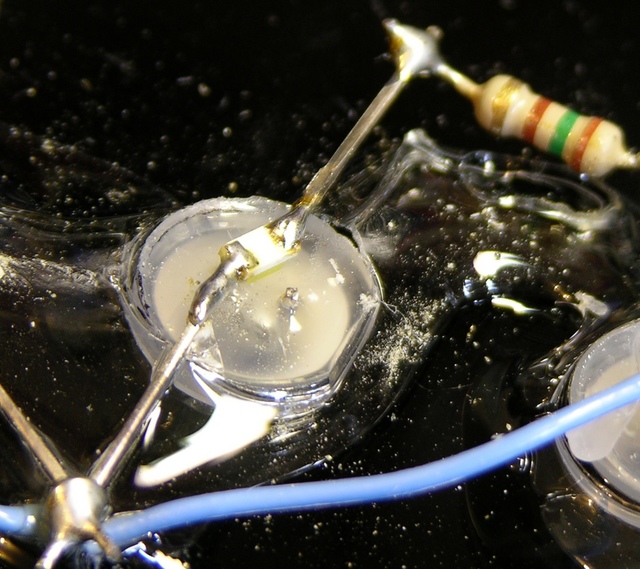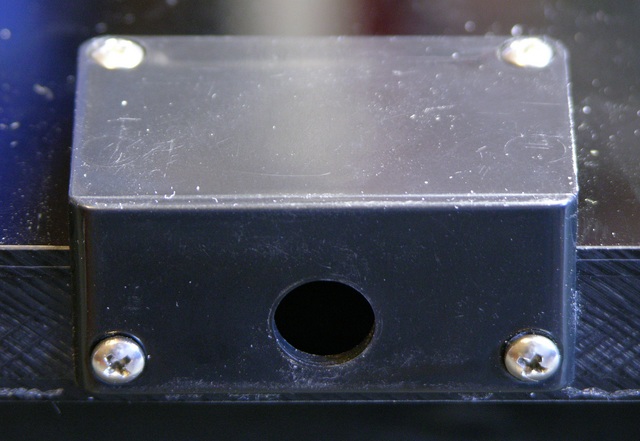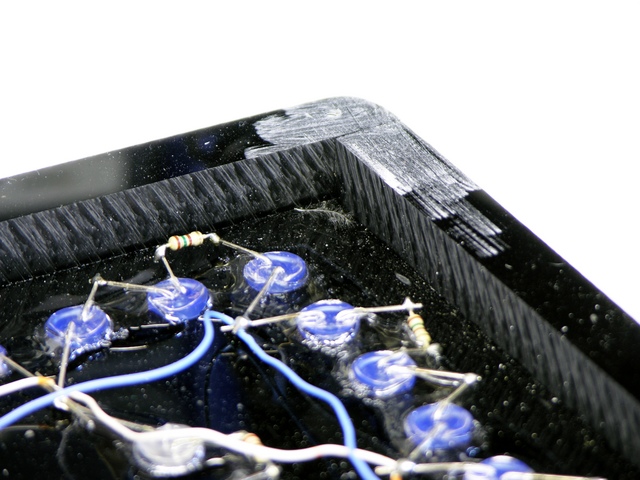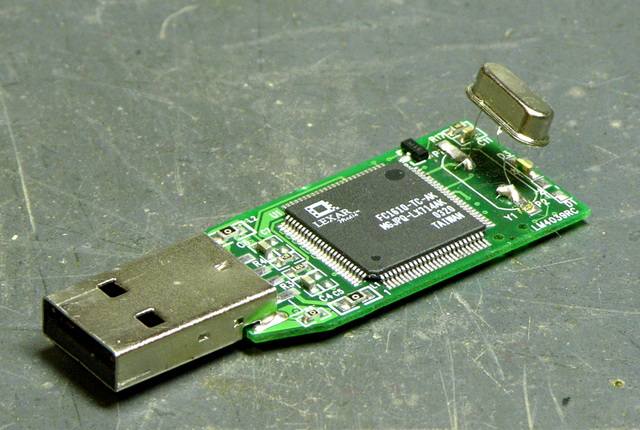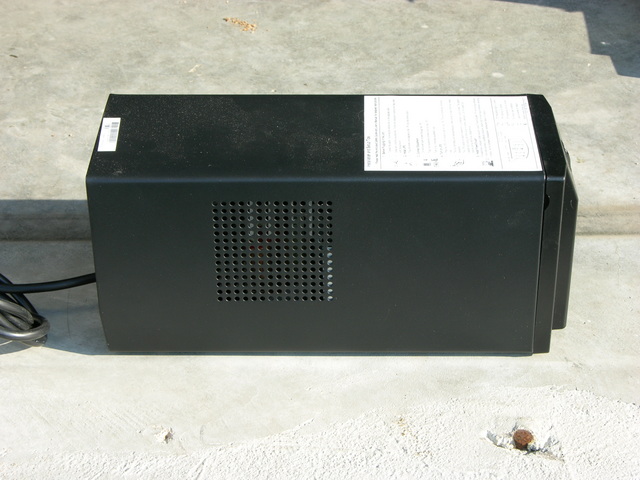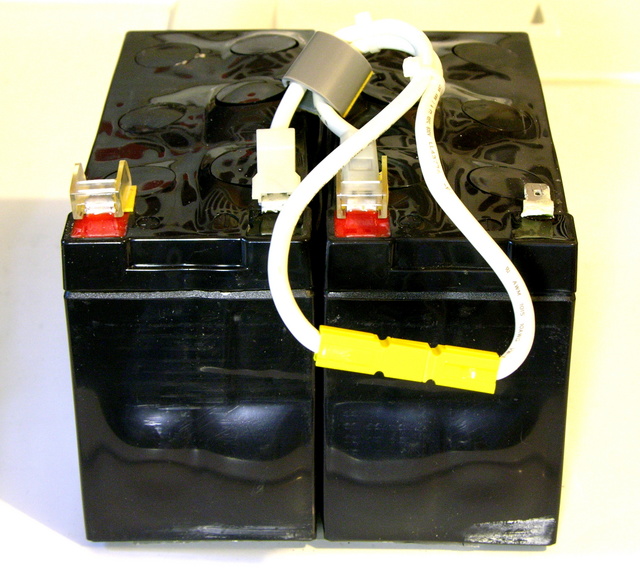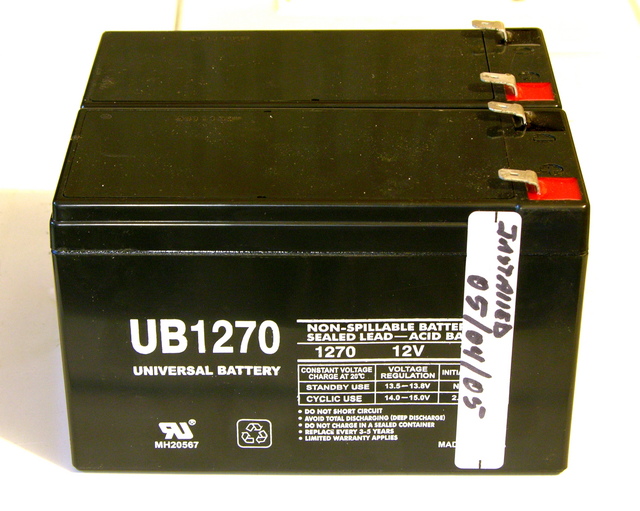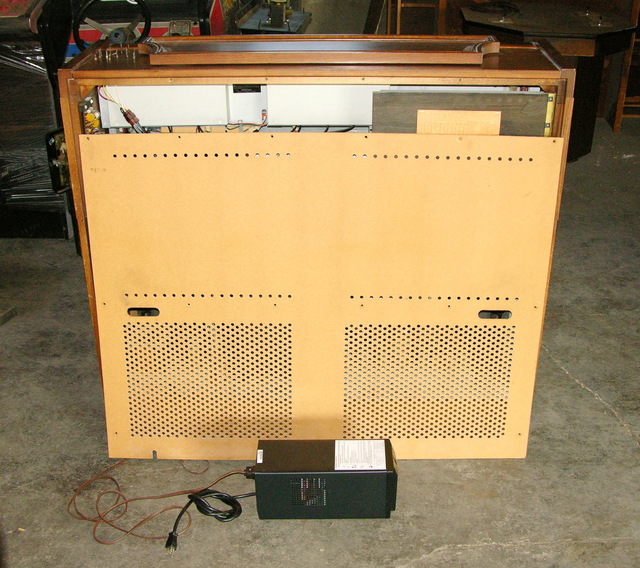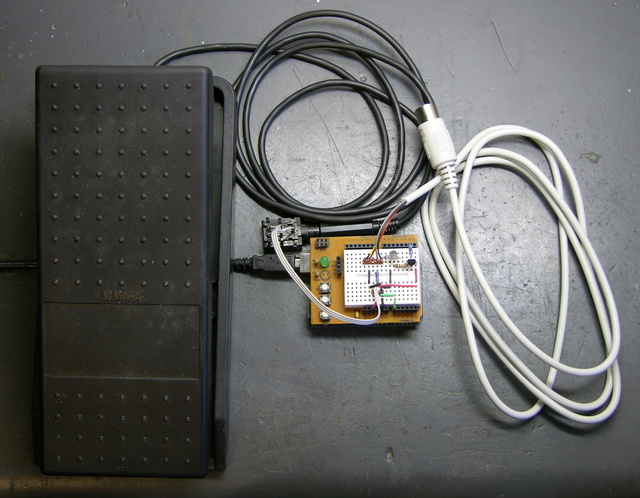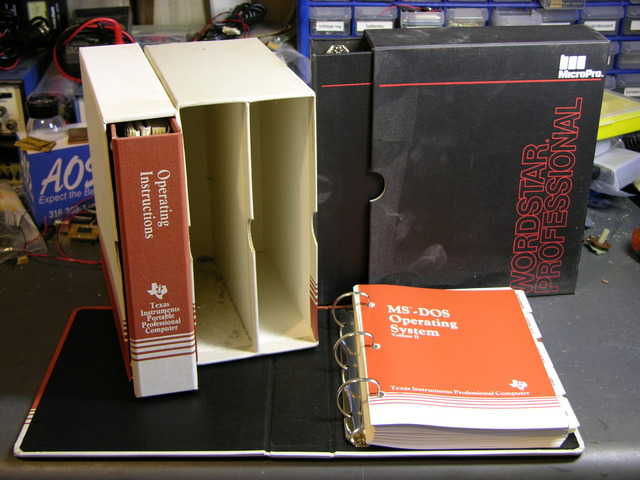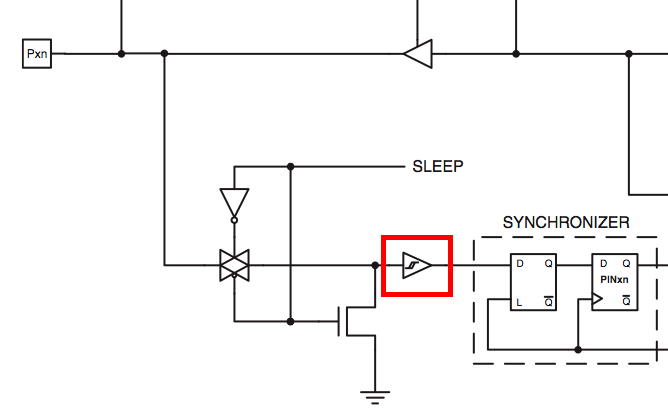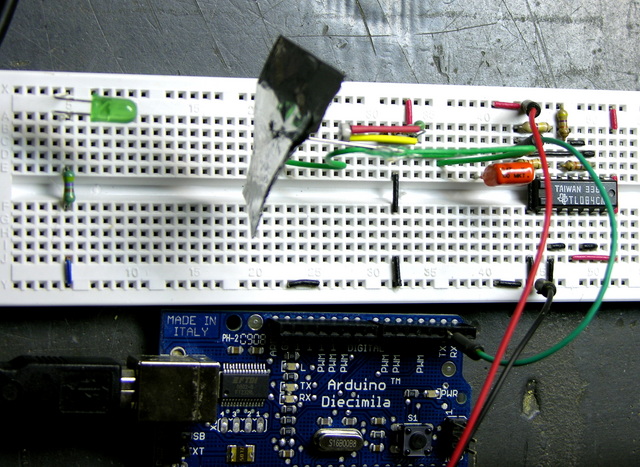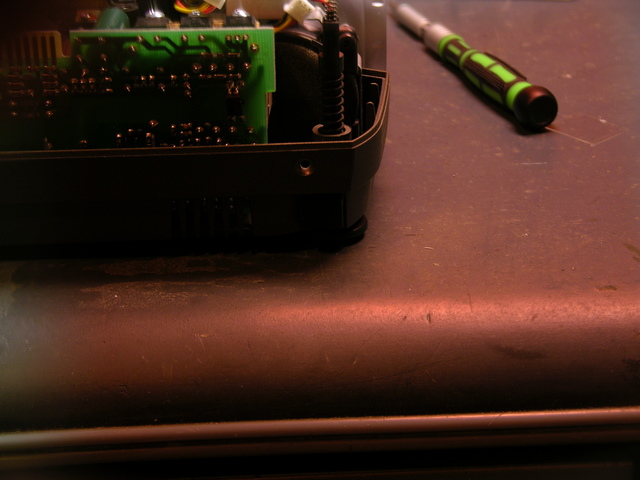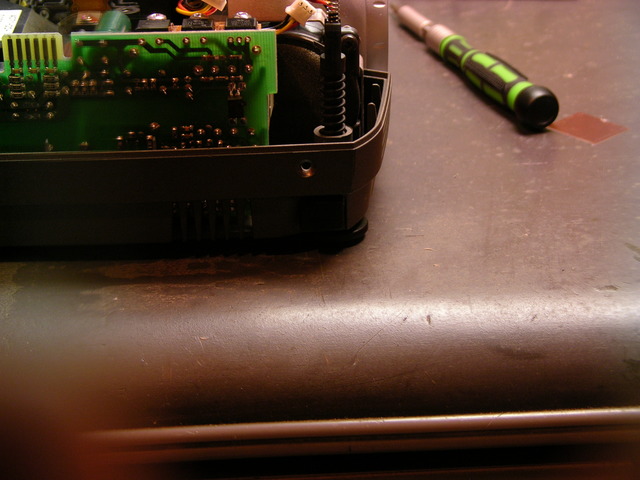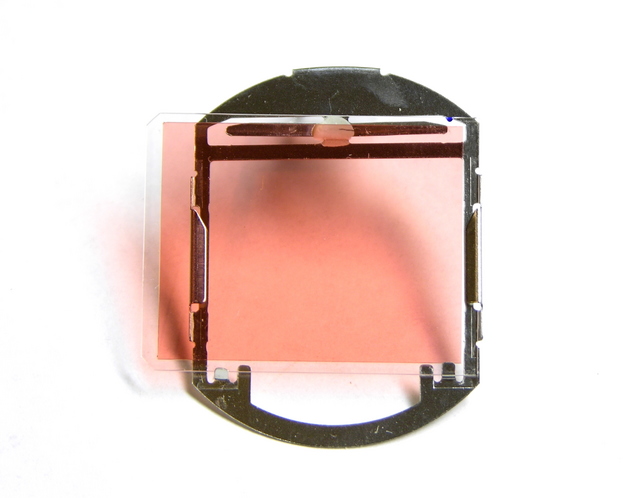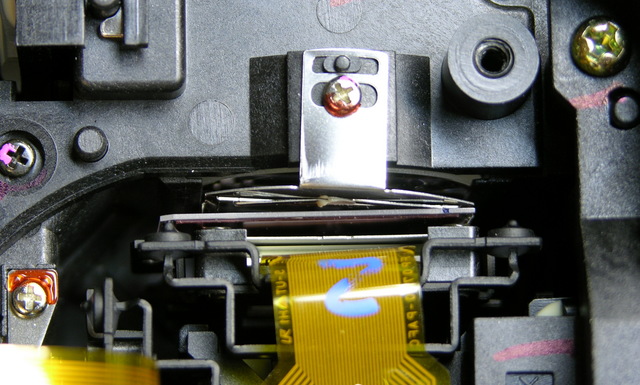A little while back I bought a couple of used Axis 2100 network cameras, intending to use them at home (driveway cam? front yard cam?) to replace my lousy Linksys WVC54GC. The Linksys’s video stream is viewable only in Internet Explorer or with VLC; the Axis (although older) streams motion JPEGs that can be viewed with just about anything, provides still JPEGs, and has FTP server upload capabilities to update a statically-served image on a web server.
Power Over Ethernet and Power Splitters
Having got them, I decided I’d like to play with one at work, installing it in our 3rd-floor bay window overlooking campus, so those of us with windowless offices can get a little sunshine in our lives. That would be easiest if we didn’t have to run both ethernet and power to the camera separately, so I started reading up on the camera’s power capabilities.
Power over Ethernet (PoE) is a standard for delivering 48VDC over an ethernet cable — depending on the implementation, possibly on the same pairs used for data, possibly on the spare pairs. The data pairs use differential signaling (the difference between TX+ and TX- is the signal, like balanced audio, as opposed to a single signal referenced to ground), so the DC power can be provided on the two wires of one pair and grounded on the two wires of the other pair (similar to the way phantom power is provided on balanced audio cable).
The product web page almost intimates that the camera supports PoE:
- Access to a power outlet not needed with use of Power over LAN Midspan and Active Splitter from Axis
- No need for power outlets and electrical cabling using Power over Ethernet products
But in fact the camera doesn’t operate when hooked to a PoE connection. Additionally, another Axis page lists a “PoE splitter” for the camera, which strongly suggests that power may be delivered over the ethernet cable by standards-based or non-standards-based means, but must be split externally before entering the camera.
Still, pp 59 and 62 of the users guide show intriguing connections among the I/O port, the power connector, a bridge rectifier, and a switching power supply; and p 65 lists the power supply as accepting 9-15VAC or 9-15VDC, which is kind of interesting. Even though the unit clearly doesn’t function on PoE, I thought it was worth opening up to see whether it would accept non-standards-based power on the ethernet port.
By the way, recognize that green thing?
Going In
Here’s the camera with the bottom of the case lifted off. Note that the top of the circuit board faces the bottom of the enclosure.
The CCD is on a separate PCB stuck onto the end of the main board.
Another view of the top side of the board with the CCD board separated.
And the bottom of the board (facing the top of the enclosure).
Continuity
I started by trying to trace connectivity from the power jack to the unit’s ground, not remembering that the camera accepts AC input. I got no continuity there, as my tester doesn’t indicate continuity through diodes. After noticing the bridge rectifier (last photo above, just to the left of the upper right corner), I realized my error and was able to trace ground from the rectifier output throughout the unit.
Next I traced from the power jack to the I/O connector and confirmed the connections shown in the user guide — you can provide or draw rectified and filtered but unregulated DC power on the I/O connector.
Feeling bold from my discoveries, I checked continuity to the ethernet jack. I got DC continuity between ground and the center pins 4-5, but no other connectivity. Bah! No non-standards power on ethernet for me.
Hm, but I also hadn’t successfully traced V+ from the rectifier throughout the unit. I figured I needed to pick it up from the other side of the LM2596 voltage regulator — which turned out to be a switching step-down regulator.

Pin 4 is the feedback that connects to the filtered, regulated output — and indeed, it connects to the V+ power supply pins of all kinds of things throughout the circuit. Cool; progress! Maybe the regulated DC voltage connects to the ethernet jack???
Mm hm, it sure does. I get DC continuity with .4-.5Ω resistance from the V+ rail to ethernet pins 1 and 2 (TX+ and TX-), DC continuity with .2Ω resistance to pin 3 (RX+), and no connection to any other pin.
So?
Although the datasheet’s application circuit above shows the 5V step-down regulator, the camera actually uses the LM2596S-3.3 for 3.3V power. That this appears on both TX pins of the ethernet port suggests that I could provide DC power on pins 1-2 and ground on 4-5.
But it would have to be regulated 3.3VDC, which (1) isn’t standards-based PoE and (2) isn’t going to travel well over 100+’ of cable. This suggests that a non-standards-based switch-end power injector directly in through the camera’s ethernet isn’t going to work well.
More plausible: Build a PoE-attached power supply with a 48V-3.3V step-down converter and hang it off the back of the camera. At first I thought that doing PoE would require a dedicated PoE chip to do the negotiation, but all that’s needed is a 25kΩ resistor across the powered pairs. So it really would be feasible to do, without a special chip just for the PoE.
However, if the solution is going to require external PoE down-conversion anyway, why bother going all the way down to the regulated 3.3V? Why not go 48V-12V and come in the regular power jack, which also eliminates any risk of making the LM2596 unhappy by feeding power into its output? (Its block diagram looks like that shouldn’t be a problem, but I don’t know enough to be certain.)
If using an external down-converter anyway, the only drawback I can see of splitting the power out to feed the the power jack separately rather than the ethernet is the requirement for an extra connector.
Or the Simple Way
Regardless, I don’t really want to have to build an external step-down regulator just to get the cameras working. So for now, I’m more likely to build simple cable splitters to inject 12V onto unused pairs at the switch end and split it out to the power jack at the camera end.
